I’m Rick Sieman, and Sieman says, Don’t Ask!
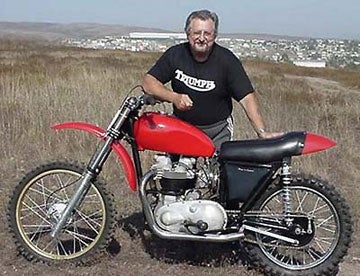 Go ahead, but if your question is stupid, you’ve been warned…
Go ahead, but if your question is stupid, you’ve been warned…
If you choose to email a question to this forum, then you must conduct yourself accordingly. Therefore, the following rules are in order:
1. Do not write your email to me IN CAPS. If you do so, I will print out your question and do terrible things to it.
2. Do not request a personal e-mail response. Since I get thousands of questions each month, trying to answer them all would cut deeply into my leisure time, which I value more than your current state of confusion.
3. Try to spell at least in a semi-correct fashion. If you choose to mangle the English language, expect no mercy from this quarter. You might be mocked severely.
4. Do not ask for me to send you copies of my many manuals and literature. I am not in the library business, nor do I want to spend the bulk of my day at the copy machine just because you’re too lazy to ask your dealer, or look around a bit.
5. Don’t bother me with truly stupid questions, like how to get 50 more horsepower for a buck and a half
6. Now that you know the rules, think carefully and have at it!
SUBJECT: REMEMBER SADDLEBACK PARK?
Hey, Rick Sieman:
The starting gate at Saddleback Park, is still just sitting there!!! This photo was only taken about a week ago by Ernie Becker. The gate is just waiting for 40 MX bikes to line up, and Stu Peters to pull the lever!
David Hopwood
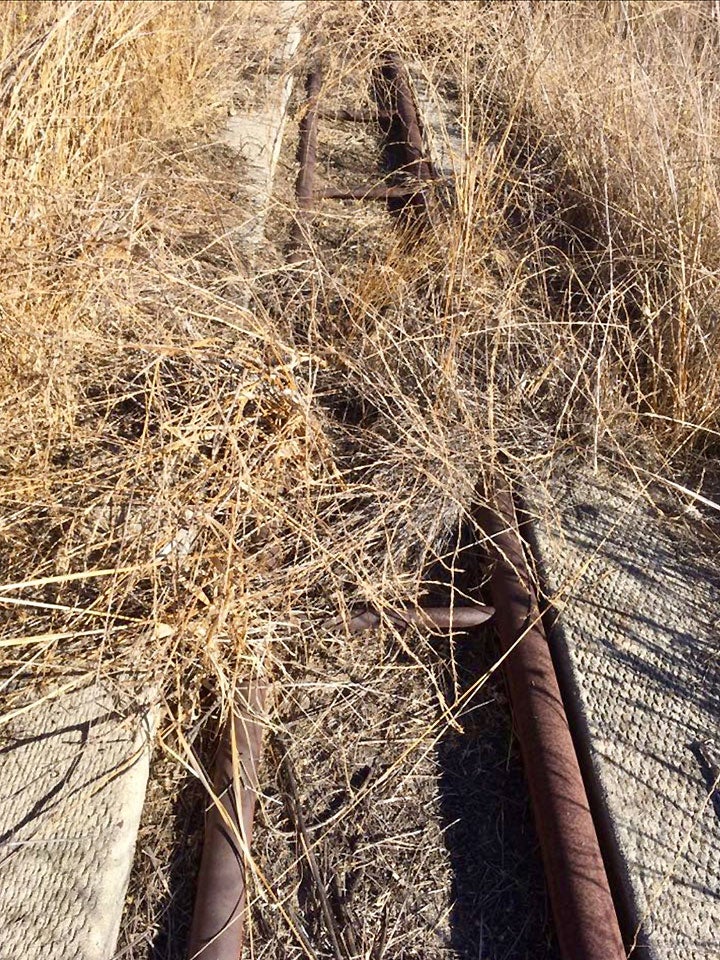
Yep, the original starting gate is there. And you can see most of the course if you look past the weeds. Rumor has it some locals still go out and ride the course. Brings back some memories.–Rick Sieman
***
SUBJECT: GOOD ADVICE
Dear Mr Sieman:
Page 580 says it all!
“Monkey Butt”, by Rick Sieman.
Chuck Carter
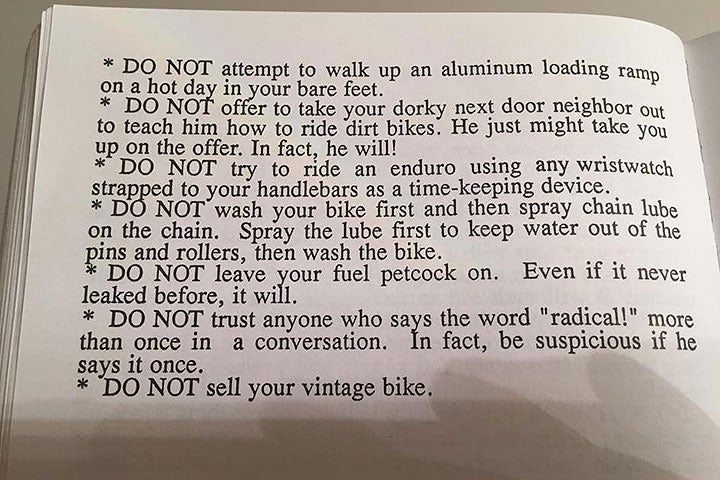
Think about it. The best long-term investment you can have is hanging onto your old vintage bike. I sold a 650 desert Triumph a few years ago for $7000. My total cost in the bike was 700 bucks or so. Can’t beat that.–Rick Sieman
***
SUBJECT: THE 1972 SUZUKI TM250; GOOD OR BAD?
Mr. Sieman:
1972 TM-250 decent vintage bike? Thoughts?
Hal Jarvis
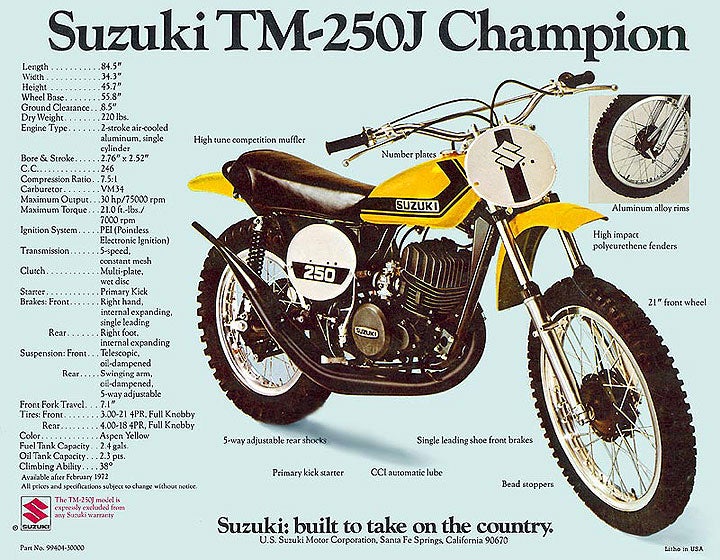
The 250 Champion, produced by Suzuki in 1972 was the factory’s answer to the race winning works bike Joel Robert campaigned to the world championship in the 1971 season. While the 250 looked like a copy of the works RH250, it was actually based on the 250 enduro of that year, right down to the motor and frame. While not as bad as the TM400 Cyclone, the TM250J did have some quirks that put the bike into the “entry level” category in MX circles of the time.
As mentioned, the Champion motor was based on the 250 enduro of that year, right down to the motor internals, outside cases, and oil-injection. Painted black, with a sinuous low expansion chamber, alloy rims, and a spiffy “works” paint job, the bike looked the part of a serious motocrosser, but looks aren’t everything, especially once you fired it up and took it out for a few laps.
In 1972 the Champion was known as “the race bike you wanted to race if you didn’t want to race it”, and with good reason. A soft power hit, along with less than stellar suspension components made the stocker more of a play bike than serious motocross machine.
Before the Honda Elsinore came out in 1973, the Suzuki Champion was the Japanese MX bike to have, and Suzuki sold boat loads of ‘em. It seemed everybody had one, with the aftermarket folks selling everything from whole frames to motor kits, along with tuners roto-rootering the motors into high horsepower hand grenades, since the enduro based lower ends and transmissions couldn’t handle all that power.
Many a used 250 Champion sat on the pages of Cycle News to be bought for a song after the Elsinore came out. The bike stayed pretty much the same, and in 1973, the clutch actuation got changed from the enduro motor, and a newly designed top end with a single ring piston was fitted for more power. Different foot pegs, and gear ratios made their way into the later TMs too.
The bike stayed about the same through 1975, when in 1976 the stellar RM250 came out and Suzuki finally started seeing the winner’s circle.
Sure, some were raced, but to make a ’72 Champion competitive, you had to bolt on a set of Konis, get the front fork damper rods re-drilled, with a new set of springs, a new pipe, bigger carb, dump the restrictive air box (that looked like something off a submarine) port it and even cut the frame for better handling. And after all that, you had spent enough money to buy a Husky or a Maico anyway. So why do it in the first place? Because Joel rode one, that’s why.–Rick Sieman
***
SUBJECT: THINGS YOU NEED TO KNOW ABOUT RIDING AND LIVING IN BAJA
Hey, Rick Sieman:
My buddy and me go to Baja and trail ride about six or seven times a year. We live near San Diego so the drive to Baja takes less than an hour. We usually ride from Rosarito or Ensenada and have actually ridden the Baja 1000 course all the way down. You can’t beat the riding and there’s plenty of places to stop for gas and food along the way.
Now here’s the deal: We are both divorced and retired and figured that it would be cool to get a place down there. That way we could ride whenever. But whats the deal on owning a place in Baja? Is it doable? Does it make sense dollar wise? Really want to know the inside scoop on this. I understand that you lived there for some time.
Randy and Mark
San Diego, CA
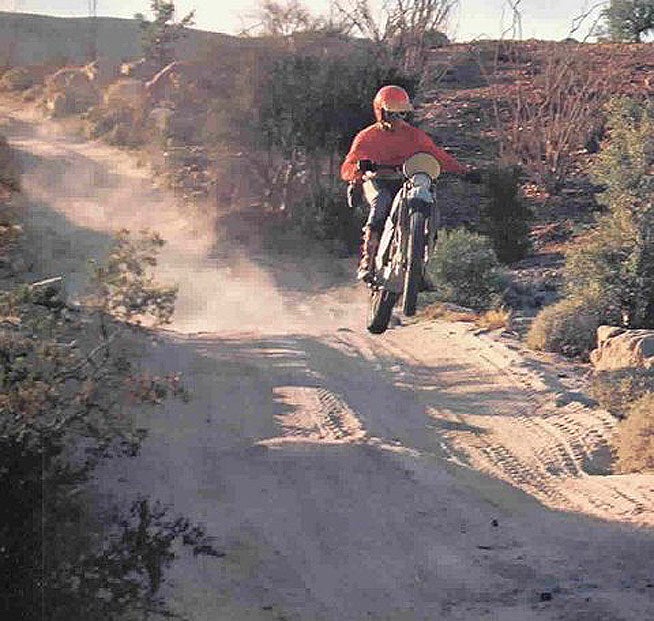
There have been some frightening headlines lately regarding Baja. The big one has been about the people losing their homes in Punta Banda and the other eyeball-snapper was about the un-insured American who had a traffic accident and was held for 18 hours. I’ve read the headlines in the US papers about both things and have watched the TV news and heard much about these things on the radio, as well. Much of what I’ve heard has been completely wrong, and the media people reporting it were uninformed. Recently, I spent a considerable amount of time with a Mexican business professional friend of mine, helping him prepare a newsletter for his insurance customers. In the process, we explored Mexican law to a great extent, spent time with various Baja agencies and officials and got some real facts. So, if you want to learn something, read on. Be warned, much of what you will read will be on the “dry” side, but this piece is designed to inform, not entertain.
THE PUNTA BANDA HOME NIGHTMARE
About 300 Americans living in Punta Banda (a beachside community just south of Ensenada) were having huge problems. They were being evicted from their homes, and are screaming long and loud for justice. When I first heard about the situation, it sounded bad. Further investigation revealed some alarming facts.
First off, for those who don’t know, I lived in Baja for over 15 years. I have purchased three homes and sold them with no problems whatsoever. The reason my purchases (and sales) were no problem, is that I found out what was required (by Mexican law) to acquire property without a hassle. Before I even looked for a home in Baja, I spent an hour with an American who was a Mexican lawyer. The cost was $100. I then spent an hour with a good Mexican attorney, who verified what I had been told by the first attorney. The cost was $20. All told, time and money well spent.
THE FEDERAL ZONE
You’ve heard that no Americans can own beachfront property in Mexico. Guess what? No one–including Mexican citizens–can own land in the Federal Zone. The Zone is the land that is 20 meters from mean-average high tide; about 66 feet. In other words, if you drew a line in the sand where the average high tide was, and then took another measurement 20 meters back from that, all that land cannot be owned by anyone, period. You can, however, use the land for a guaranteed period of time with a Federal Zone Concession. It will cost you an application and processing fee, a monthly fee, and a renewal fee whenever the term for the Concession has expired. The average fee will be between $3500 and $5000 and will depend on the amount of land. The average monthly fee will be about $70 every two months. The reason I know about Federal Zone Concessions is that part of my first house was right on a cliff overlooking the ocean, and allegedly in the Federal Zone. Allegedly? Well, in 1994 (could be wrong on the year?) a little known law was passed that exempted property from the Federal Zone if the land was on an angle–or cliff–more than about 30 degrees. The reasoning was that you could not reasonably be expected to utilize land on a steep cliff. This ruling had no effect whatsoever on people whose land was on a normal flat beach. In fact, many homes in Baja are split on both normal land and Federal Zone land.
LAND OWNERSHIP AND BANK TRUSTS
No foreigner can own land in Mexico (corporations excepted) that’s within approximately 30 miles from the border, or the coastline. To get around this barrier, Mexico has come up with a Bank Trust. Here’s how it works:
-You select the property you want and contact a Mexican bank.
-They do all the paper work (with the help of a notary publico) and make sure the title to the property is free and clear, with no leins or encumberances.
-They charge you a one-time fee for the trust, which varies, depending on the value of the property. Figure about $4000 to $10,000 for a nice house.
-There’s a yearly fee of about $250 to $300 to maintain the trust.
-You get a title called a Fidecomiso that is a legal binding document.
-The bank is the registered owner and you are the beneficiary of the property. You can live in it, or sell it, or even rent it out if you want.
-You get all the benefits.
-The Trust is good for 50 years, and is easily renewable for another 50, and another after that.
-You can leave the house to your kids (or anybody else) if you die.
-You are protected with a bank trust and people do not lose their homes when they have a bank trust.
-In effect, the responsibility for a clean hassle-free title (trust) is with the bank. It’s up to them and that’s what they charge you for.
-This is the way to acquire property in Baja.
NOW, THE WRONG WAY!
-The worst way to acquire property in Baja is to rent it.
-The next worst way is to lease it.
-The longest a lease is legal in Mexico is one day less than ten years.
-Any lease longer than ten years is illegal and does not have to be honored.
-All the stuff you’ve heard over the years about 33-year and 99-year leases is simply not valid. Sure, people have made deals over the years with Mexican landowners for ultra-long leases and have had no problems. It’s because they were dealing with an honorable person who lived up to the lease. However, you must be aware that the long-term leases are no more binding than a hand-shake.
-If you rent or buy land in Mexico, you must have some sort of a resident permit, normally an FM-3.
-Therefore, even if you bought land and then let your FM-3 expire, you lose your right to that land until you renew it.
SO WHAT HAPPENED IN PUNTA BANDA?
The people who bought (?) the land in Punta Banda violated nearly every rule I just pointed out. Not one of them acquired a Bank Trust! In addition, they did the following:
-Many of them rented land, then built homes on that land.
-Many of them signed long-term leases.
-It was common knowledge that the land they “acquired” was in dispute, and had been in dispute for a very long time. One family had a legal claim to the land, yet the land had been give to an “ejido” (workers cooperative) group.
-Why anyone would build a home on leased or rented land, knowing that the courts were fighting over the ownership, puzzles me greatly.
-In fact, one former US attorney, retired, rented a lot in Punta Banda, built a home on the lot, and is now complaining that the real land owners want him to leave the rented lot so they can sell it. The court recently decided on the rightful owners.
-These people “acquired” the land at a really low cost. That’s how they got sucked in on the deal. The price was just too good to turn down.
-Some of them put a fortune into building a home on rented lots with illegal leases.
INSURANCE FACTS
There’s been a huge amount of controversy regarding Mexican insurance lately, with the headline-gathering accident of a few years ago. Rumors are everywhere, and no one seems to know just what your insurance covers, and what it does not cover.
THE FACTS
-If you purchase Mexican insurance here, or on the US side, chances are your “normal” liability policy covers only your car against third parties. This means that if you hit someone and it’s your fault, the other party will be covered for damages to their vehicle and for medical.
-If you have full coverage, the third party will be covered, as will your vehicle and your occupants.
-When you use a toll road in Baja, you are issued a receipt. Keep this, as it gives you third party property damage protection and medical coverage for you and those in your vehicle.
-Please note that this toll receipt does not guarantee you legal council, or post a bond for you, in case of a felony accident.
-In the highly publicized Kraft accident, Mr. Kraft did not have Mexican insurance when he had the serious accident. He only had the toll receipt, which protected him, his occupants and the third party with medical insurance.
-Under Mexican law, if any person in the accident (either party) receives a major injury (one that would not be healed in two weeks), the accident then becomes a felony.
-When a felony accident is committed, a bond must be posted before the person who caused the accident can be set free. Since Mr. Kraft clearly caused the accident by crossing over the center divider of the freeway to go from south to north, and caused not only serious injuries to himself, but to an occupant in the other vehicle as well, there were two felonies involved.
-The amount of the bond is set by the local District Attorney. In the case of the Kraft accident, the family wanted Mr. Kraft moved immediately to a hospital in the US, but did not have sufficient funds to post a bond. About 18 hours later, the bond was reduced to $2700 and the Kraft family paid over $4000 for a helicopter to airlift Mr. Kraft out. Unfortunately, Mr. Kraft died about a week after the accident. US doctors noted that his paralysis and eventual death had nothing to do with the time lag in being moved to the US facility.
Right now, people are paranoid about going to Baja. But this need not be the case. You simply must take the proper precautions, which include:
1. Get Mexican insurance.
2. Make sure that the insurance you purchase has legal aid, which includes attorney fees and bond posting.
3. We checked with Instant Mexico Auto Insurance (a popular insurance spot in San Ysidro) and they told us that it cost only $2.15 per day extra to get the legal/bond coverage. If you buy full coverage insurance from them, the legal/bond coverage is included with the package.
4. So, if you plan to purchase basic liability (the minimum), you should add the legal/bond to protect yourself completely.
5. If you are currently living in Baja and have your insurance already, it has the legal/bond coverage you need if you’re dealing with a good agent. I use Jorge Cuadros, who makes sure that all of his customers get the right stuff. His office is in Rosarito and the phone is 011-52-661-21295. Jorge will even take your insurance order over the phone so you don’t have to stop before the border when crossing. I’ve known Jorge (George) for many years and he’s a straight shooter. Keep that number handy if you have some special needs, like bringing in a boat, or a RV.
6. If you have friends coming to visit who plan to drive here, you can advise them as to what they need.
7. Currently, Cuadros offers legal/bond coverage only on a minimum 30 day basis, but will soon be able to offer it on a per-day basis for your visiting friends.–Rick Sieman
***
SUBJECT: WHY DO VINTAGE BIKES COST SO MUCH?
Dear Rick Sieman:
Question: I want to race in the vintage bike class; 1975 or older stuff. If I recall correctly you could buy a brand new bike for around a thousand bucks or so. But when i look around to buy one, they want three times as much as when it was new. Why?
Larry
Dallas, TX
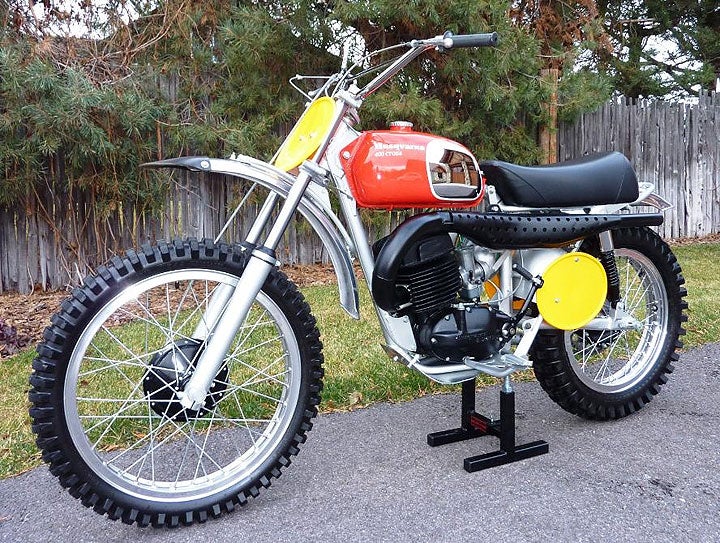
A clean vintage bike from the 70s can go for monster bucks. It doesn’t matter that you paid eight or $900 for it brand-new. It’s a lot like a 57 Chevy. In 92, I had a chance to buy a 57 Chevy convertible for $22,000. It was in perfect condition, but I decided not to do it. That same car today would be worth about $75,000.–Rick Sieman
***
SHAMELESS PLUG
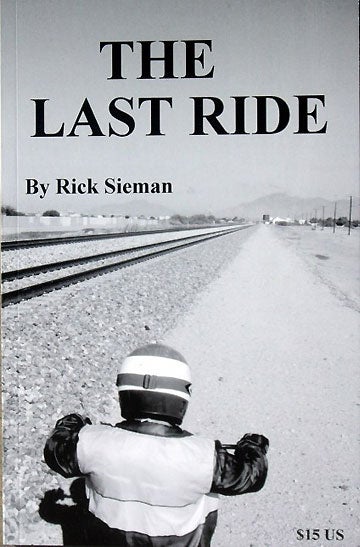
My new book, THE LAST RIDE, is at now out. It’s fiction and starts in 1969, when an 18-year-old kid just out of high school gets a chance to ride his Yamaha 250 DT1 from Pennsylvania to Los Angeles … all off-road. His adventures are truly amazing. The book then jumps 40+ years where the same person, now in his 60s, wants to get that old Yamaha back in his possession and return it home by riding it all off-road across the country again. The book is $15 plus $2.75 for mail anywhere in the US and for more information, the email is: superhunky@gmail.com, the Paypal address: superhunky@gmail.com, and the website address is www.superhunky@gmail.com–Rick Sieman
 Your Privacy Choices
Your Privacy Choices